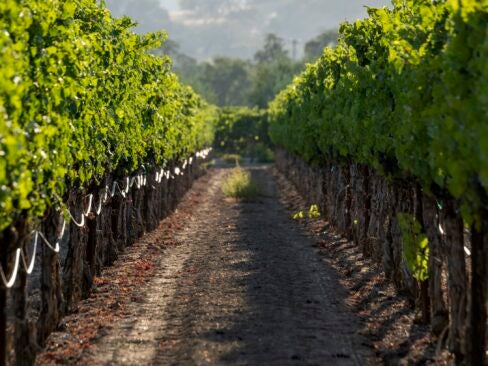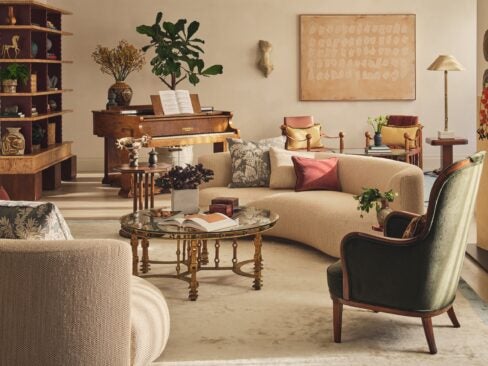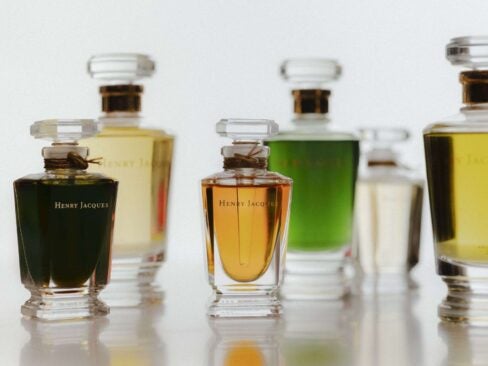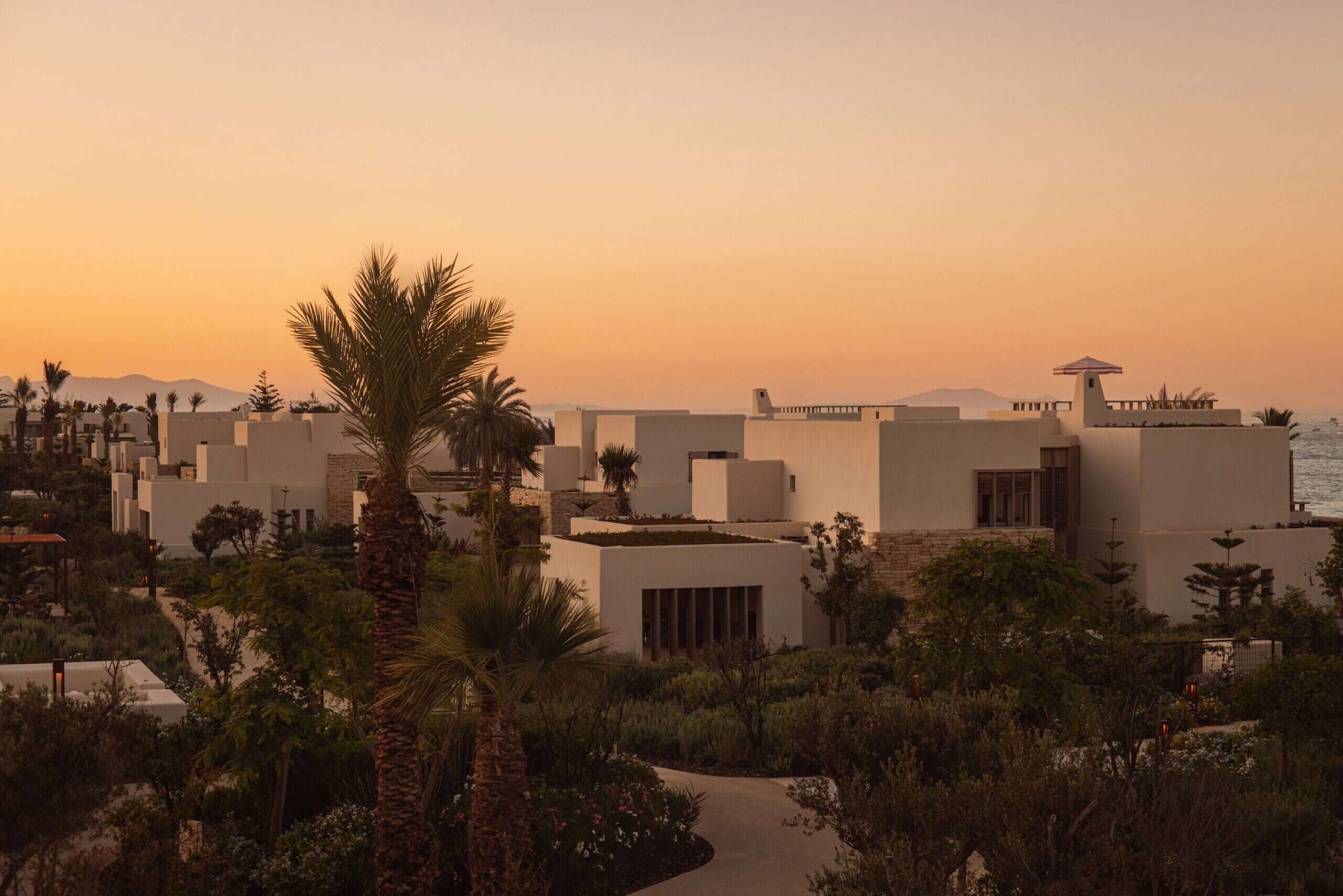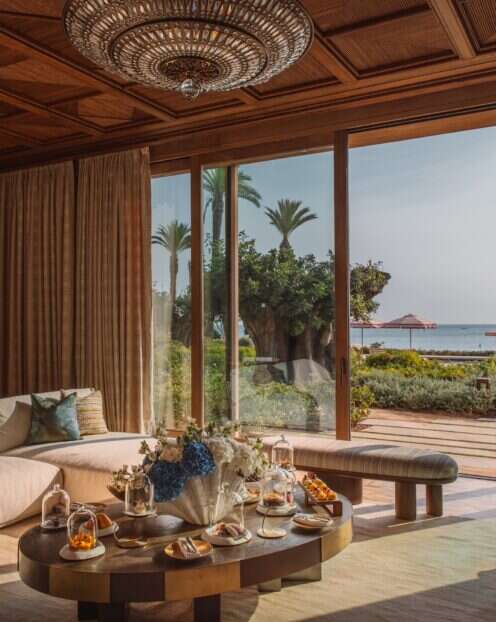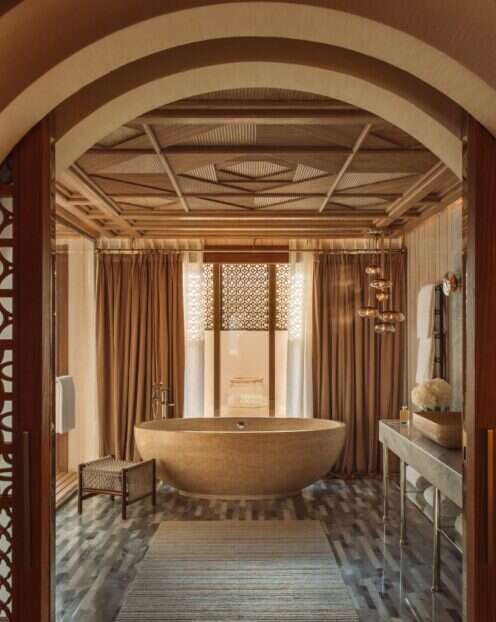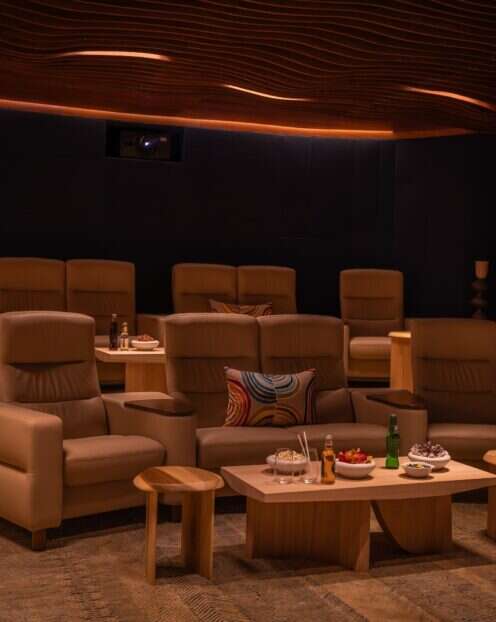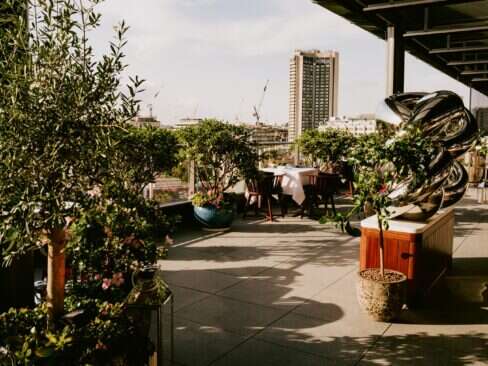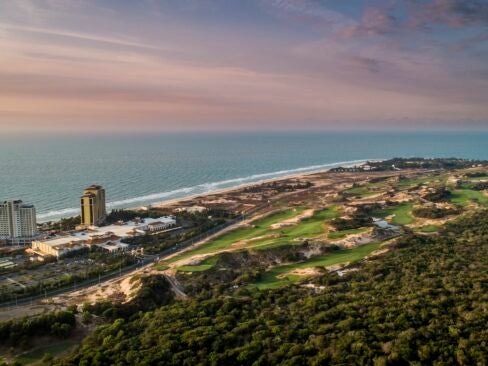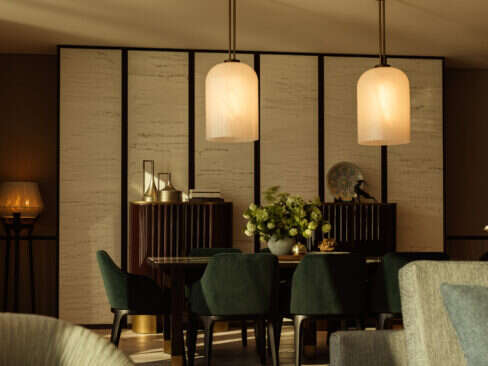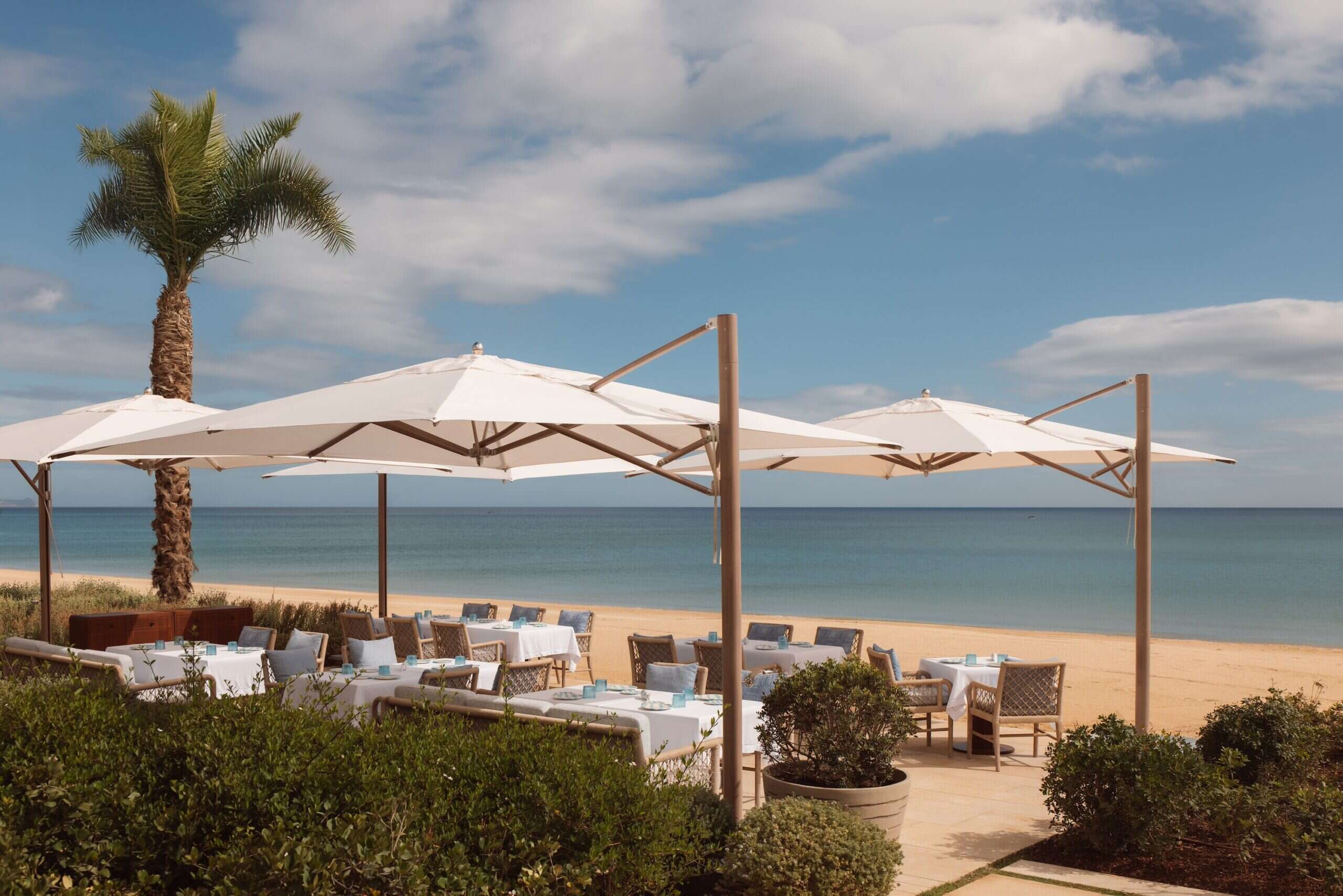
It’s good to be the king, as Mel Brooks in his guise as a lascivious Louis XVI reminded us in his 1981 film, The History of The World Part One. It’s particularly good if you happen to be King Mohammed VI of Morocco, who, whilst not an absolute monarch, nevertheless wields a significant amount of unfettered influence over his subjects. He also enjoys a personal fortune ranging anywhere between Forbes’ 2015 figure of $6bn and other estimates up to $9bn, making him easily the country’s richest individual.
It’s intriguing, therefore, why he entered the hotel business – after all, it’s not as if he needs the money. In 2010, however, Mohamed debuted the Royal Mansour in Marrakech to great acclaim. Comprised solely of 53 riads, traditional houses constructed around an inner courtyard, with nothing so plebian as a room or suite in sight, the property recalibrated the metrics for opulence in a city already replete with ultra-luxe hospitality.
Last year, a second Royal Mansour opened in Casablanca in a 1950s high-rise, and more recently, a third outpost on an exclusive stretch of Mediterranean beachfront made its debut: the Royal Mansour Tamuda Bay. Just a few hundred yards of sandy stroll away from the King’s own seaside home in a part of the country less visited by foreigners but long popular with the upper echelons of Moroccan society, the hotel remains every bit as lavishly appointed as its two predecessors.
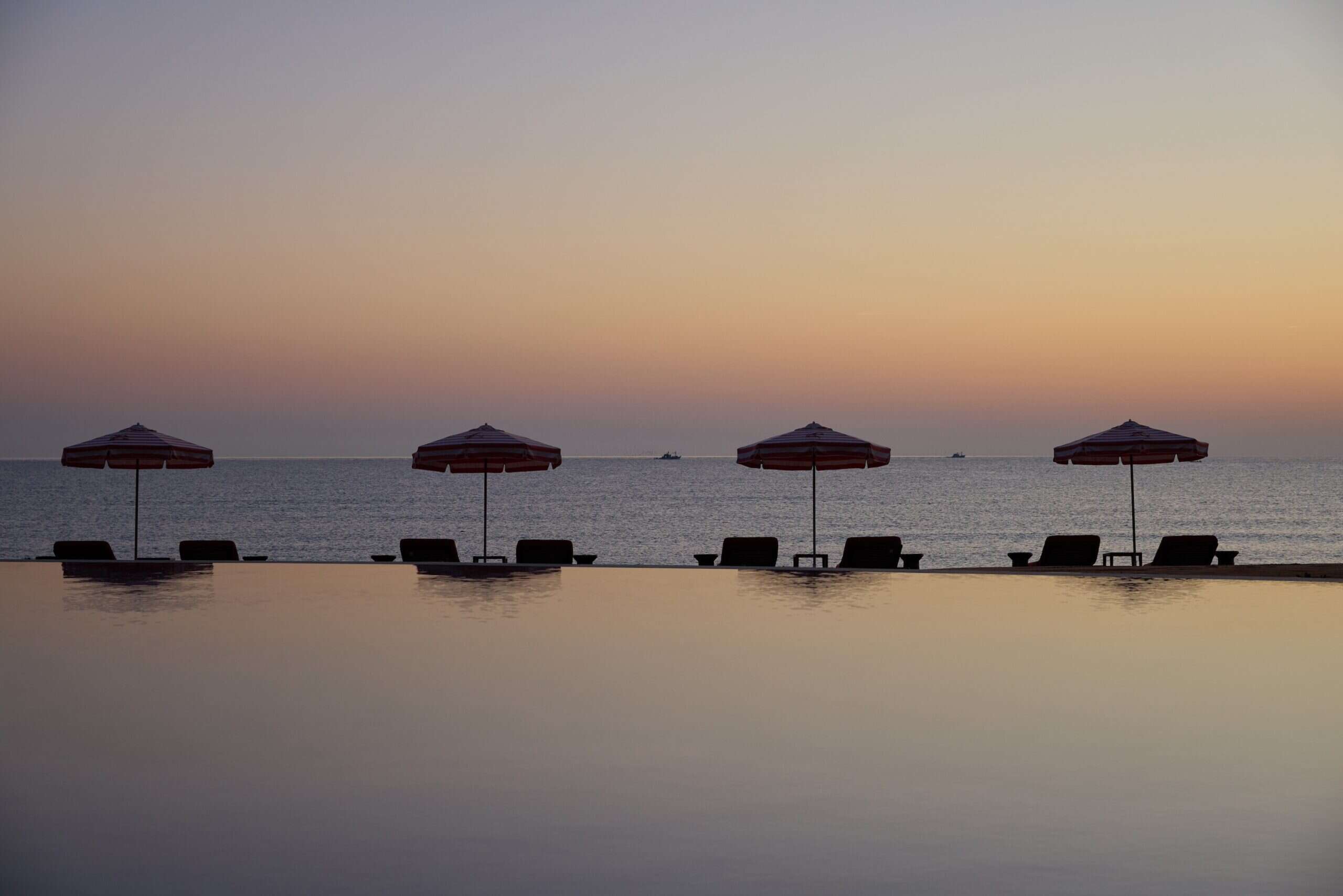
Stay
While the 55 accommodations, spaced across 25 acres of verdant leafy low-rise, do include suites, it’s the signature villas, and in particular the 18,000 sq ft Royal Villa, that deliver as sumptuous a sea-front style signifier as is found anywhere. Think, the Maghreb meets Malibu, but devoid of any ostentation. And then maybe also think of the motivation behind it all – one of the richest men in the world, habituated from birth to a life of limitless privilege. There really is, draped across this emergent portfolio of spectacular properties, a veneer of laconic kingly luxuriance that, whilst difficult to articulate, is very easy to get used to.
A network of underground tunnels totalling 280,000 sq ft places much of the logistics out of sight, enabling staff to pop up and disappear like genies, using strategically positioned elevators. In the case of the Royal Villa, straight inside it.
One likely reason why King Mohammed is deploying his first-hand knowledge of first-class hospitality is probably to do with traditional Moroccan craftsmanship, for which he is an enthusiastic proselytiser. The mosaic tilework, marquetry, metalwork, and some particularly exquisite marblework are finished to the highest of standards. Fit for a king – in this case, literally.
This quiet corner of Mediterranean Morocco preserves its aura of refined exclusivity in part due to its inaccessibility. The small airport at the nearby town of Tetouan, however, does accommodate private aviation, where a rather raffishly attired chauffeur (Royal Mansour has some seriously stylish uniforms) can whisk guests back to Tamuda Bay in the hotel’s hybrid blue Bentley in 20 minutes.
Dine
The Royal Mansour restaurants are yet another indicator that an “only the very best will do” attitude discreetly underpins everything. The three restaurants at Royal Mansour Marrakech are already garnering awards, and the three that have just opened in Tamuda Bay are destined to make no less of an impact. A French restaurant, La Table, is overseen by three-Michelin-starred Éric Fréchon, the Italian eatery Coccinella, by three-Michelin-starred Massimiliano Alajmo, and the Spanish, Le Méditarranée, by three-Michelin-starred Quique Dacosta.
All three disport a maverick free spirit: Alajamo, at just 28 years old in 2002, became the youngest ever three-starred recipient, while Dacosta, occupying demi-God status in his native Valencia just across the Alboran Sea, as this part of the Mediterranean is known, never worked under anyone, and is totally self-taught. Fréchon, meanwhile, after 25 years at Paris’s iconic Le Bristol, the last 15 of them holding those three stars, stunned the foodie universe last year when he suddenly walked away to pursue his own interests.
With their own head chefs, sommeliers and serving staff installed alongside Moroccan colleagues, the gastronomic offering from these three masterful exponents of three distinct European cuisines is truly exceptional. The culinary kudos served up with just one of these superstar chefs would be sufficient for any hotel. But three individual, three-Michelin-starred chefs in a property of only 55 keys; I think we know by now where all this is coming from, and yes, while it’s good to be the king, it’s also pretty good to be a guest of the king!
The Spa
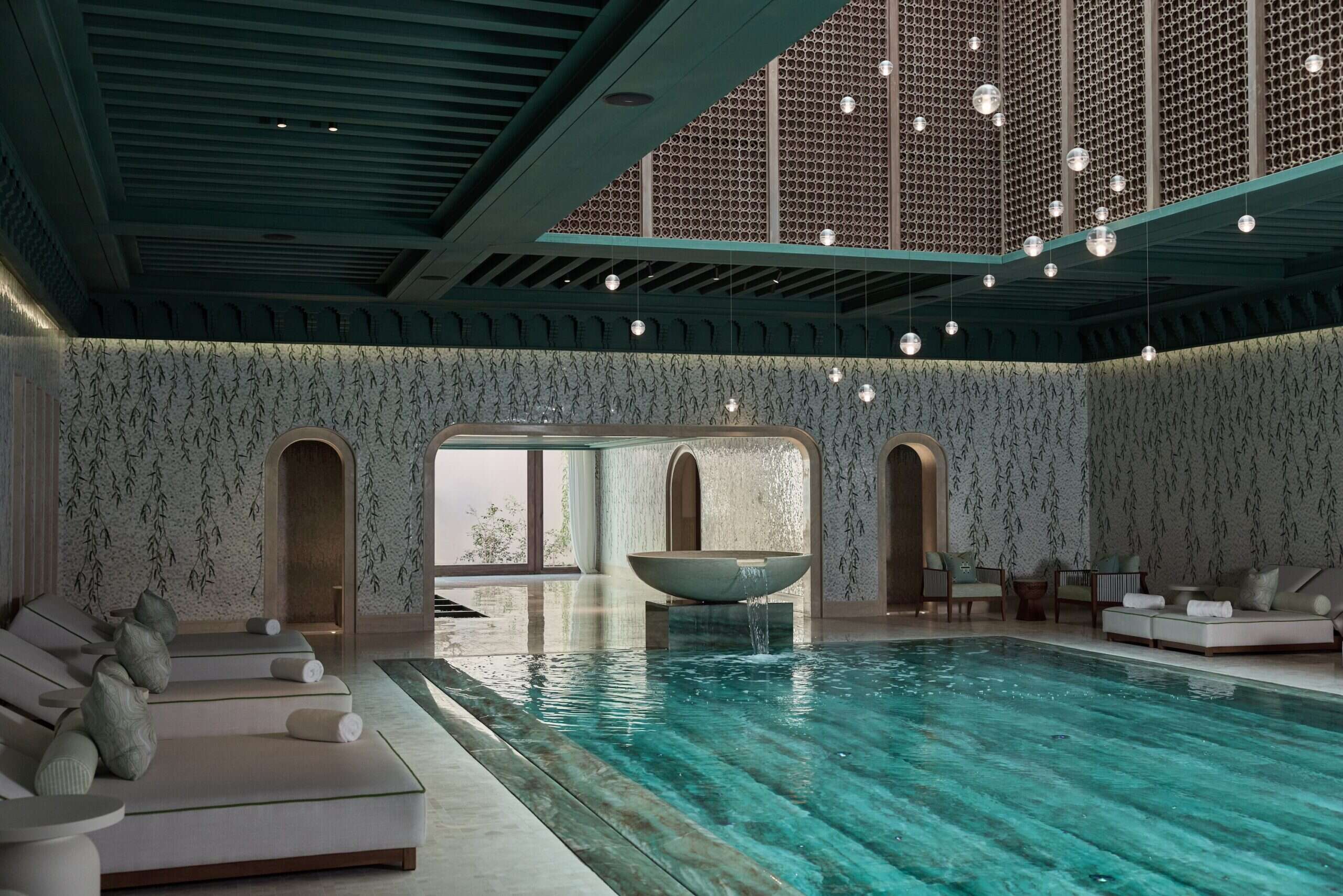
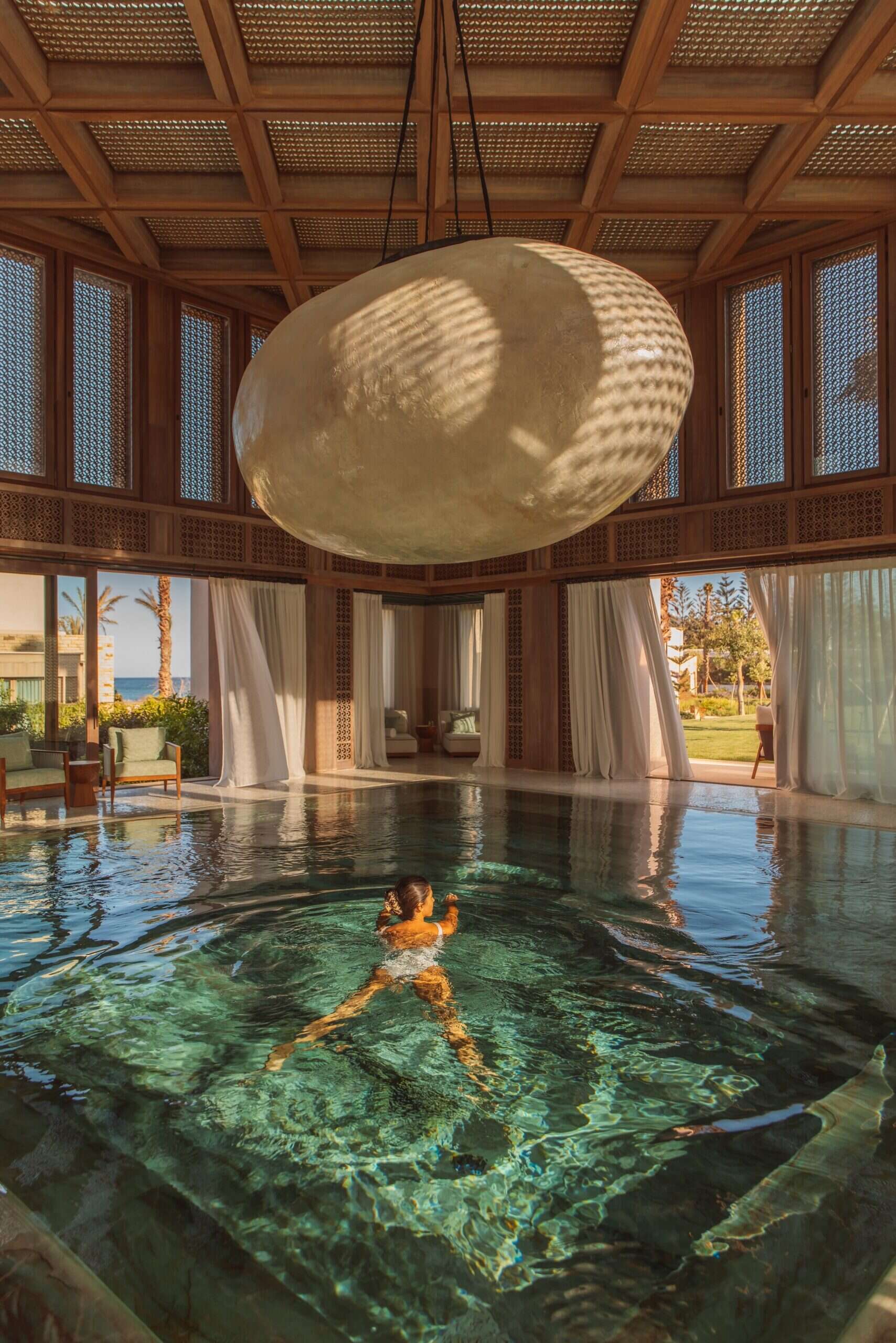
Relax
The Alboran Club, with a stylish bar, library, a fire crackling away in winter, and various niches of tranquillity to snuggle into, sits at the heart of the hotel. A particularly welcoming attitude to families manifests itself with an expansive kids’ club, where wannabe princes and princesses have their every whim catered to by a dedicated army of childminders.
Royal Mansour Tamuda Bay also features a 46,000 sq ft spa complex that extends over three floors and presents a beautifully conceived oasis of tranquillity. With a hammam, two spectacular pools, one of which transforms into a giant jacuzzi, cryotherapy and a pink salt room, it proffers limitless opportunities for preeminent pampering. It’s also a Medi-Spa, with a full range of medically supported treatments and consultations embracing diet, longevity programmes, traditional Chinese techniques, and Ayurveda.
In contrast to Morocco’s better-known and notably busier Atlantic beaches, this idyllic sliver of Mediterranean is an altogether more sedate affair. The beach, running past the King’s property towards the pretty little village of M’diq, visible three miles away, which conveniently for our celebrity chefs, also has working fishing boats, is supposed to be a public beach. In practice, the King’s presence means this is half a mile of very exclusive private beach, complete with nets to keep jellyfish at bay. All water-borne activities are catered for, from wakeboarding to water skiing, with two beautiful Riva yachts available for trips out to sea. The heated pool isn’t massive, but with the sea gently lapping just yards away, that’s not an issue, not least with Quique Dacosta overseeing the poolside catering.
Explore
When the French proclaimed their protectorate in 1912, this Northern coastal region simultaneously established a Spanish one until Morocco gained independence from both in 1956. Often referred to as Andalusian Morocco, this captivating region, with the imposing Rif mountains looming majestically behind, remains less touristed than other areas of the country. Northern Morocco’s long, often conflicted, relationship with Southern Spain reaches back to the 15th-century expulsions of Moriscos and Jews, many of whom ended up in Tetouan. For centuries, families kept the keys to their houses in Granada.
Tetouan, in addition to its fascinating Spanish colonial district, has the most perfectly preserved medina in Morocco, listed as a UNESCO World Heritage Site since 1997. Its atmospheric, never-ending maze of alleyways and constant confusion of hurried humanity is like being immersed into a pre-mass tourism time-warp. The large Jewish area, the Melah, which a century ago boasted 17 functioning synagogues, now has just a handful of Jewish residents. Many emigrated to Israel, though they return regularly, not least to the 10,000 tombstones in the Jewish cemetery. Traditional crafts flourish here, and in 2017, Tetouan was inducted into UNESCO’s Creative Cities Network, where it’s also possible to visit the Royal Artisan School, the only one of its kind in Morocco, of which the king is a prominent patron. Tetouan reveals itself as a relatively undiscovered gem.
Further afield, Chefchaouen, the blue city, is another culturally infused destination, while Tangier, the former International City with its legacy of artistic hedonism, is a 90-minute drive through the gorgeous greenery of the Rif mountains. It’s also the location of the nearest sizeable airport, far enough away to keep Tamuda Bay and Tetouan under many radars.
Parking right in front of the terminal on my departure, in a Mercedes EQS (sustainability is front and center at Royal Mansour), my driver appears totally oblivious to the traffic policeman’s wild gesticulations. Opening his door with a dismissive chuckle, he blithely observes, “I don’t think he’s going to bother the King’s car”. No, I don’t suppose he is – it’s good to be the king.
The Royal Villa can be booked from $27,000. Click here to book now. Elite Traveler may earn commission if you book through the link.
